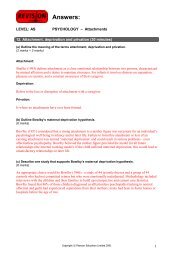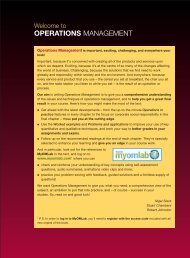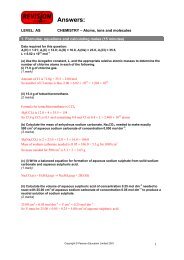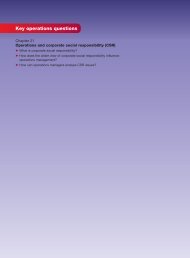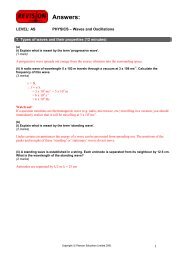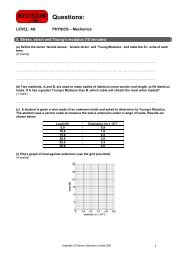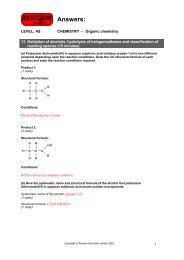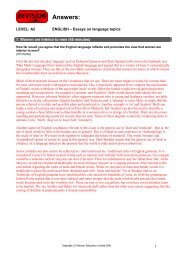The Dove Campaign for Real Beauty - Pearson
The Dove Campaign for Real Beauty - Pearson
The Dove Campaign for Real Beauty - Pearson
Create successful ePaper yourself
Turn your PDF publications into a flip-book with our unique Google optimized e-Paper software.
Part 1 Marketing nowWal-Mart is doing this too. It recently opened two experimental superstores designed to testdozens of environmentally friendly and energy-efficient technologies: 32A 143-foot-tall wind turbine stands outside one Wal-Mart Supercenter. Incongruous as itmight seem, it is clearly a sign that something about the store is different. On the outside,the store’s façade features row upon row of windows to allow in as much natural light aspossible. <strong>The</strong> landscaping uses native, drought-tolerant plants cutting down on watering,mowing, and the amount of fertiliser and other chemicals needed. Inside the store, an efficienthigh-output linear fluorescent lighting system saves enough electricity annually from this storealone to supply the needs of 52 single-family homes. <strong>The</strong> store’s heating system burns recoveredcooking oil from the deli’s fryers that is mixed with waste engine oil from the store’s Tire andLube Express. All organic waste, including produce, meats and paper, is placed in an organicwaste compactor, which is then hauled off to a company that turns it into garden mulch. Wal-Mart’s environmental goals are to use 100 per cent renewable energy, to create zero waste, andto sell products that sustain its resources and environment. Moreover, Wal-Mart is eagerlyspreading the word by encouraging visitors – even from competing companies: ‘This is notsomething we’re keeping to ourselves. We want everyone to know about it.’Finally, companies can develop a sustainability vision, which serves as a guide to the future. Itshows how the company’s products and services, processes and policies must evolve and whatnew technologies must be developed to get there. This vision of sustainability provides a framework<strong>for</strong> pollution control, product stewardship and environmental technology.●Tesco aims to be leader in helping to create a low-carbon economy. Sir Terry Leahy,Tesco’s CEO, champions a sustainable vision: ‘I listen when the scientists say that, if wefail to mitigate climate change, the environmental, social and economic consequenceswill be stark and severe. This has profound implications <strong>for</strong> all of us, <strong>for</strong> our children,and <strong>for</strong> our children’s children.’●BSkyB decided to become carbon neutral in January 2007 and succeeded within six monthsthrough an ef<strong>for</strong>t across the whole organisation. But like Tesco, their aim is to educate as wellas act: ‘We saw the policy as part of a push to educate customers to reduce their impact onthe environment.’ Once sceptical Rupert Murdoch, chairman and chief executive of NewsCorporation which owns BSkyB, says that the rest of his media empire will now followBSkyB’s lead.However, most companies today still focus on the lower-left quadrant of the grid in Figure 2.1,investing most heavily in pollution prevention. Some <strong>for</strong>ward-looking companies practise productstewardship and are developing new environmental technologies. Few companies have welldefinedsustainability visions. Emphasising only one or a few cells in the environmental sustainabilitygrid in Figure 2.1 can be shortsighted. For example, investing only in the bottom half of thegrid puts a company in a good position today but leaves it vulnerable in the future. In contrast, aheavy emphasis on the top half suggests that a company has good environmental vision but lacksthe skills needed to implement it. Thus, companies should work at developing all four dimensionsof environmental sustainability.92




